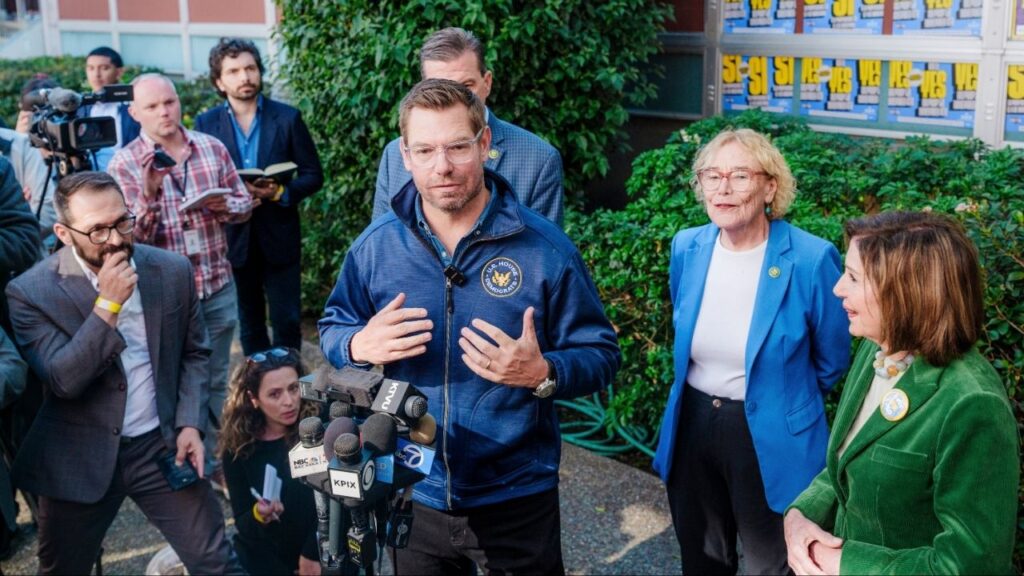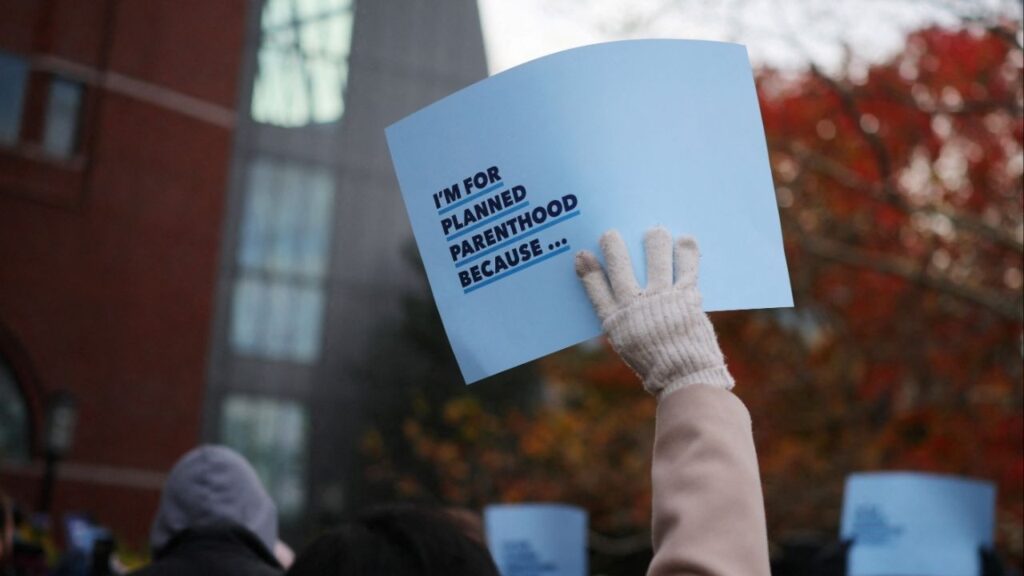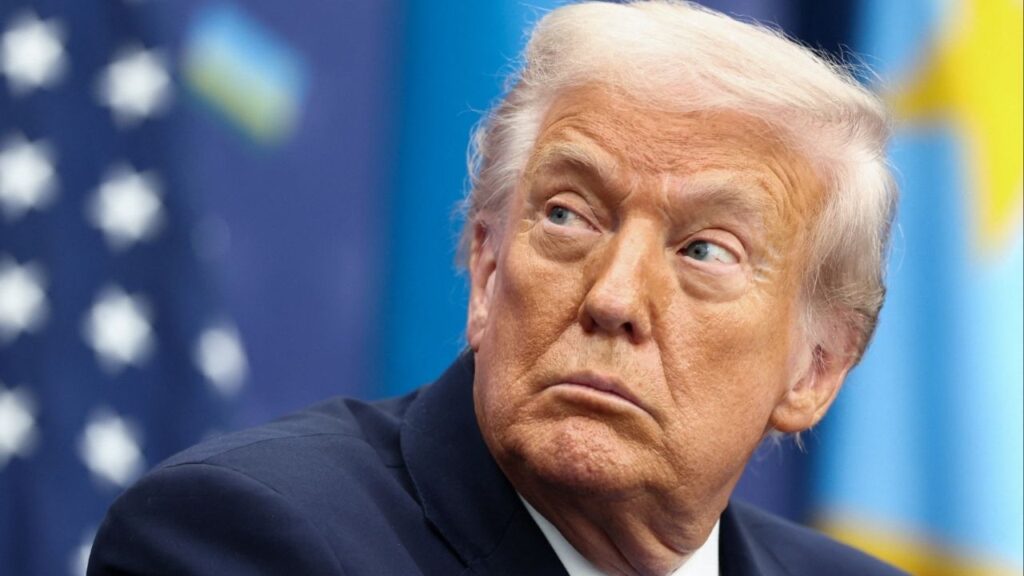A toppled sign reads "customs control zone" near a destroyed Russian border post in Sudzha, Russia, on Aug. 12, 2024. Ukrainian troops made quick gains after they launched their surprise cross-border offensive into Russia’s western Kursk region on Aug. 6, capturing many settlements and the town of Sudzha. (David Guttenfelder/The New York Times)

- Ukraine targets Russian airfields, ports, and oil depots, including a key ferry in the Black Sea port of Kavkaz.
- Ukraine holds over 490 square miles in southern Russia and continues to launch attacks to disrupt Russian supply lines.
- Ukrainian forces aim to isolate Russian troops, challenging Kremlin’s efforts in eastern Ukraine while targeting critical logistics hubs.
Share
|
Getting your Trinity Audio player ready...
|
As Ukrainian forces fight to isolate a large group of Russian soldiers caught between a river in Russia’s Kursk province and the Ukrainian border, Ukraine has launched a series of strikes at airfields, ports and oil depots in other regions of Russia aimed at degrading the Kremlin’s war effort.
Ukrainian Missile Strikes on the Black Sea Port
A Ukrainian missile strike on the Black Sea port of Kavkaz hit a large cargo ferry laden with fuel Thursday, triggering a towering blaze at the facility, according to Russian and Ukrainian officials as well as video posted to social media channels. Kavkaz is one of the country’s largest passenger ports and the main ferry terminal connecting Russia with Crimea.
“This ferry is one of the key links in the Russian military logistics chain, primarily for supplying the occupying forces with fuel and lubricants, but it also transported weapons,” a Ukrainian navy spokesperson, Dmytro Pletenchuk, said in a statement.
The strike on the port is the latest in Ukraine’s effort to step up its attacks inside Russia as the two countries pound each other with a series of punches and counterpunches, using both direct assaults and more precision-guided drone and artillery attacks.
Related Story: Ukraine Says It Used US Glide Bombs in Russia’s Kursk Region and Has ...
As Russia presses on in eastern Ukraine, threatening to take a strategic city, Ukraine holds more than 490 square miles in southern Russia — an area about the size of Los Angeles — and is launching attacks into other areas of Russia to bring the fight to its adversary.
The attack on the transit hub came after strikes on the only bridge linking Crimea to Russia over the Kerch Strait left it partly damaged, according to Ukrainian officials and military analysts, limiting the weight of cargo that could be carried by train across the span, forcing Moscow to increasingly rely on large ferries capable of carrying rail cars to support its occupation forces on the peninsula, which it annexed in 2014.
“The ferry sank, effectively blocking the operation of this part of the port,” Pletenchuk said. “They still have one platform left for loading rail cars onto ferries. However, there are no ferries available.”
The RIA state news agency of Russia, citing emergency services, said that a fire sparked by the attack had “practically” not affected the port’s infrastructure but that the ferry struck by Ukraine was half submerged. It was not possible to independently assess the extent of the damage.
Related Story: Ukraine’s Parliament Approves Ban on Moscow-Linked Religious Groups. One ...
Ukraine Steps Up Targeting Russian Sites
Ukraine’s stepped-up targeting of sites in Russia is part of an attempt to counter Moscow’s decided advantages in the east. In recent days, Moscow’s troops have seized at least three settlements, closing in on Pokrovsk, a logistics hub for the Ukrainian army in the region. With the city of roughly 60,000 people now under threat of Russian artillery, Ukrainian officials have urged civilians to leave.
While the Kremlin is moving reinforcements to the Kursk area in hopes of blunting the Ukrainian advance, it has made clear that it will not relax its assault in the east around the cities of Pokrovsk and Toretsk and the town of Niu-York.
“They have a firm position not to withdraw troops” from these offensive operations, Roman Kostenko, the secretary of the defense and intelligence committee in Ukraine’s parliament, told Ukrainian journalists. “This is a strategic direction for them, and we now see that even though they realize they have no reserves to recapture Kursk, they are still focusing on the territory of Donetsk.”
Ukraine’s attack on the ferry depot was part of a long-running effort to isolate Russian forces on the peninsula, which served as one of the launchpads for Russia’s full-scale invasion and continued to play an important role in supporting Russian occupation forces in southern Ukraine.
The Ukrainians also targeted the Marinovka military airfield in Russia’s Volgograd region before dawn Thursday, using long-range drones to hit the base around 180 miles from the Ukrainian border.
Related Story: Moscow Sees One of Ukraine’s Largest Drone Attacks as Fighting Rages in ...
The strikes damaged hangars and other facilities at the base, according to satellite imagery verified by military analysts and data from NASA that tracks fires, as well as videos and photographs circulating on social media that have been geolocated by military analysts. A precise damage or casualty toll could not be independently verified.
Andrey Bocharov, the governor of the Volgograd region, claimed “most of the drones” were destroyed and the damage was caused by falling debris.
The assault came as Ukraine increased its attacks on Russian airfields, striking four in western Russia last week.
At the same time, a giant blaze at the Proletarsk oil storage facility in the southern Rostov region of Russia continued to burn Friday, nearly a week after a Ukrainian drone strike Aug. 18. While local Russian authorities have declared a state of emergency in the area, Russian state media quoted local officials urging people “not to give in to panic.”
President Volodymyr Zelenskyy said the Ukrainian campaign to seize land inside Russia and the long-range strikes were part of a coordinated effort to bring the war to Russians in a way they have not felt to date.
“We must all understand that to drive the occupier from our land, we must create as many problems for the Russian state as possible on its own territory,” he said Thursday at a forum for military veterans. “This heroic work is becoming more precise, more long-range and more effective.”
President Vladimir Putin of Russia has sought to distance himself from loss of hundreds of square miles of Russian territory. Speaking during an online meeting with politicians, including the governors of the Kursk, Belgorod and Bryansk regions Thursday, the Russian leader described the territorial losses there as “security issues,” asserting that the “problems” in Kursk “are the responsibility of the security forces.”
–
This article originally appeared in The New York Times.
By Marc Santora/David Guttenfelder
c. 2024 The New York Times Company
RELATED TOPICS:
Categories

Apple TV Down for Thousands of Users, Downdetector Shows


















